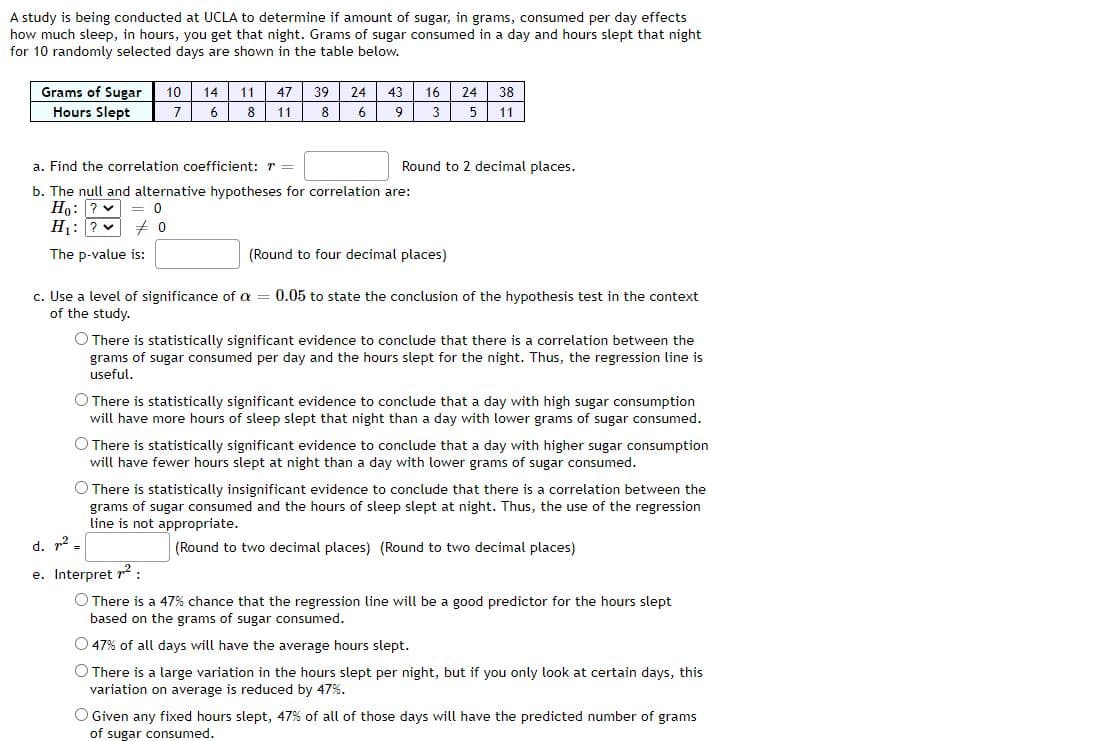A study is being conducted at UCLA to determine if amount of sugar, in grams, consumed per day effects how much sleep, in hours, you get that night. Grams of sugar consumed in a day and hours slept that night for 10 randomly selected days are shown in the table below. 47 39 24 Grams of Sugar 10 14 Hours Slept 24 38 5 11 11 43 16 7 8 11 8 a. Find the correlation coefficient: r = Round to 2 decimal places. b. The null and alternative hypotheses for correlation are: Ho: ? v = 0 H1: ? + 0 The p-value is: (Round to four decimal places) c. Use a level of significance of a = 0.05 to state the conclusion of the hypothesis test in the context of the study. O There is statistically significant evidence to conclude that there is a correlation between the grams of sugar consumed per day and the hours slept for the night. Thus, the regression line is useful. O There is statistically significant evidence to conclude that a day with high sugar consumption will have more hours of sleep slept that night than a day with lower grams of sugar consumed. There is statistically significant evidence to conclude that a day with higher sugar consumption will have fewer hours slept at night than a day with lower grams of sugar consumed. O There is statistically insignificant evidence to conclude that there is a correlation between the grams of sugar consumed and the hours of sleep slept at night. Thus, the use of the regression line is not appropriate. d. r2 - (Round to two decimal places) (Round to two decimal places) e. Interpret r : O There is a 47% chance that the regression line will be a good predictor for the hours slept based on the grams of sugar consumed. 47% of all days will have the average hours slept. O There is a large variation in the hours slept per night, but if you only look at certain days, this variation on average is reduced by 47%. OGiuon anu 17% of all therg dave nuo tho arame
Correlation
Correlation defines a relationship between two independent variables. It tells the degree to which variables move in relation to each other. When two sets of data are related to each other, there is a correlation between them.
Linear Correlation
A correlation is used to determine the relationships between numerical and categorical variables. In other words, it is an indicator of how things are connected to one another. The correlation analysis is the study of how variables are related.
Regression Analysis
Regression analysis is a statistical method in which it estimates the relationship between a dependent variable and one or more independent variable. In simple terms dependent variable is called as outcome variable and independent variable is called as predictors. Regression analysis is one of the methods to find the trends in data. The independent variable used in Regression analysis is named Predictor variable. It offers data of an associated dependent variable regarding a particular outcome.

Trending now
This is a popular solution!
Step by step
Solved in 3 steps with 5 images


